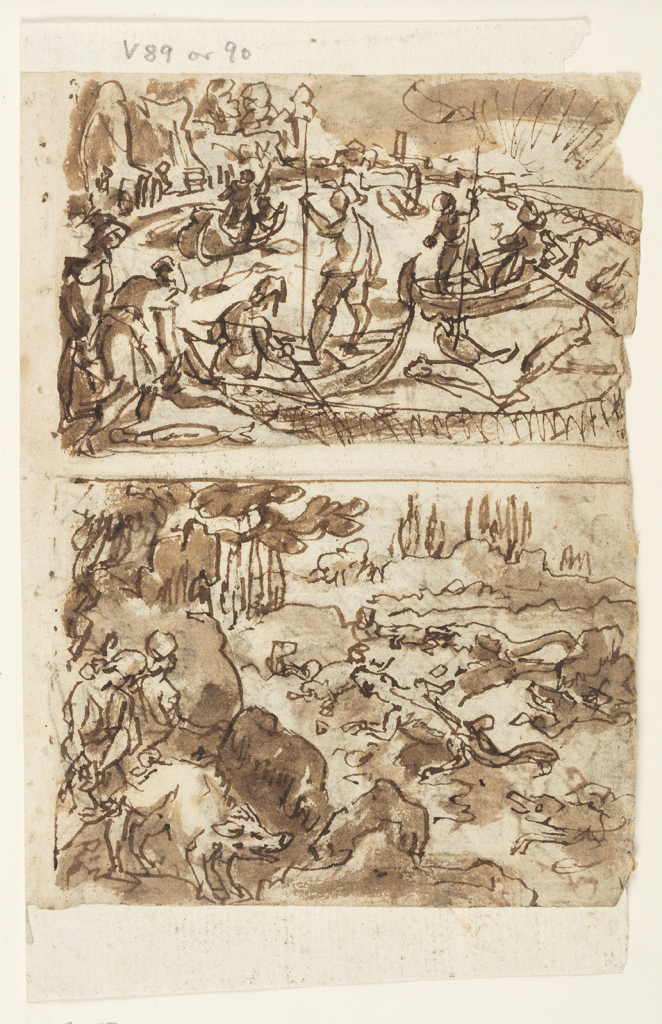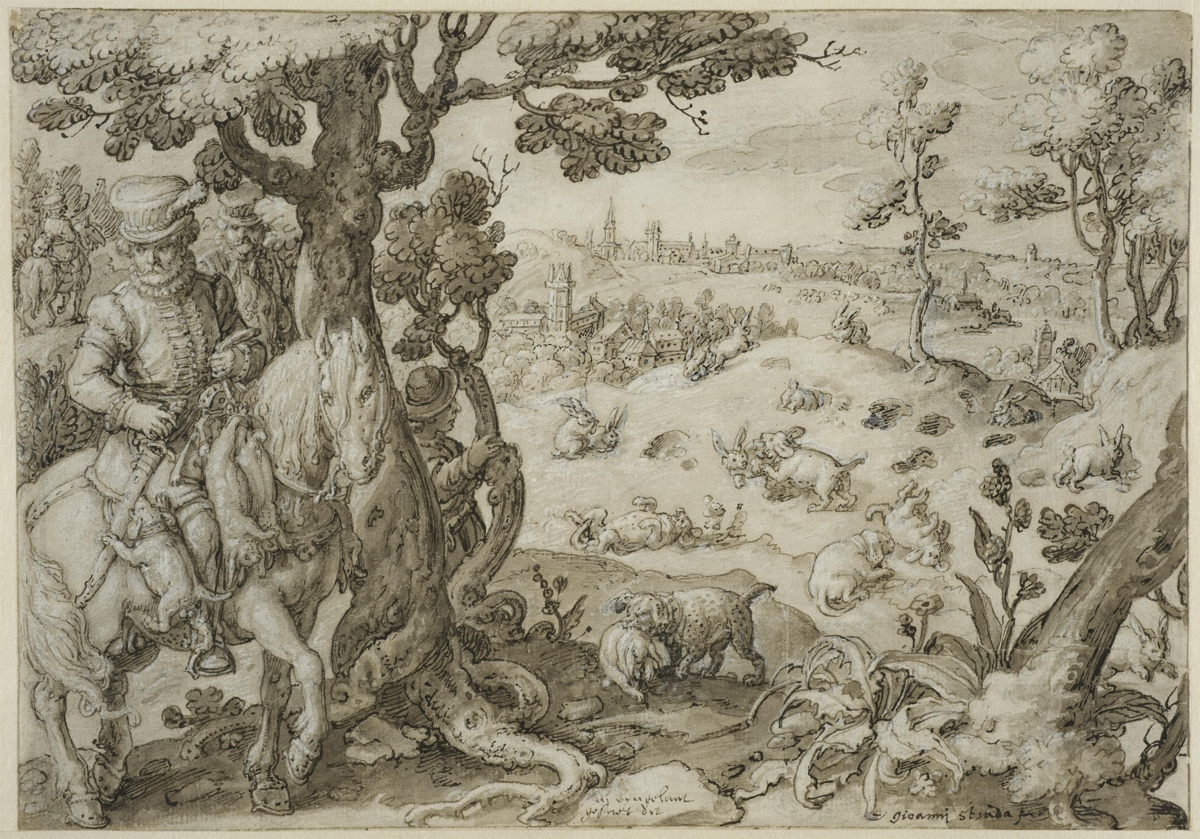Introduction to Stradanus
Jan van der Straet, often referred to as Stradanus, was a renowned Flemish artist of the late Renaissance who found his creative calling in Italy. He contributed significantly to both paintings and tapestries, especially for the Medici court in Florence. Stradanus’s extensive body of work included numerous print series, showcasing a rich tapestry of themes—ranging from pioneering technologies to historical moments and spiritual narratives. His prints transcended geographical boundaries, captivating audiences across Europe and extending their reach to Asia and the Spanish Americas, inspiring countless artistic endeavors.

A Closer Look at Notable Works
Among Stradanus’s most acclaimed pieces are his hunting-themed prints, such as The King of England Hunting for Rabbits, created in the late 16th century. This engraving is part of a larger collection titled Venationes, ferrarum, arium, piscium (The Hunts of Wild Animals, Birds, and Fish), originally crafted for a series of tapestries designed for the Medici villa at Poggio a Caiano around 1566 to 1577. The successful transition from tapestries to prints cemented Stradanus’s place in the art world, leading to further explorations of different animal hunts in subsequent series.

The captivating scene showcases the king on horseback, accompanied by fellow hunters in an idyllic landscape. Stradanus’s skill is evident as he portrays the dynamic interactions between the hunters and their hounds, capturing the exhilarating moment of a hunt amidst a backdrop of distant buildings hinting at the royal estates.
The Printmaking Process: An Artistic Collaboration
The creation of an engraving like The King of England Hunting for Rabbits involved detailed teamwork. How did Stradanus produce such exquisite prints? The journey from initial concept to finished print included various stages—sketching, refining, and collaboration with engravers.

Initial Sketches: The Genesis of Ideas
Stradanus documented his artistic vision through initial sketches, referred to as “prima pensieri.” The early design for The King of England Hunting for Rabbits serves as a prime example. His rapid strokes indicated the arrangement of figures, animals, and settings, with a free application of ink and wash. In the 16th century, paper was a scarce resource, so artists like Stradanus combined multiple concepts onto a single sheet to maximize material use.

Refining the Concept: The Modello
Following the sketches, Stradanus would create a more polished drawing known as a modello—a detailed blueprint for the printmaker. This refined version for the rabbit hunt, preserved at the Nationalmuseum in Stockholm, illustrated a wealth of detail. It meticulously outlined textures, shadows, and spatial relationships, forming a precise guide for the engraver Theodor Galle, who would ensure that the intricacies were replicated in the final print.

The contrast between the modello’s meticulous detail and the quicker initial sketches highlights the artist’s dedication to capturing not only the essence of his ideas but also the visual narrative intended to resonate with viewers.
The Engraving Process
Once the modello was ready, Theodor Galle, known for his engraving prowess, engaged the printmaking process. Utilizing a burin, he meticulously engraved Stradanus’s design onto copper plates, before inking and transferring the image onto paper using a printing press. This method effectively reproduced the intricate details, including textures, shadows, and atmospheric effects, generating prints that vividly brought Stradanus’s visions to life. However, it is essential to note that the final prints appeared as mirror images of the original drawings, resulting from the mechanics of the print-making process.
Challenges and Revisions Within the Artistic Process
Challenges often arose when moving from sketches to final prints, as demonstrated by Stradanus’s Crocodile Hunt with Pigs as Bait. The evolution from the initial sketch showcased a boar that ultimately transformed into a crocodile during the engraving phase. This change not only altered the focus of the composition but also emphasized the thrill and danger of the hunt, showcasing Stradanus’s flexibility and creativity as an artist.
The International Dimension of Printmaking
Stradanus’s artistic collaborations extended beyond Italy, illustrating that printmaking was an international venture. While composed in Italy, the engravings took shape in Antwerp, a vibrant hub for print publication. Prominent publishers like Philips Galle played crucial roles in bringing these engravings to broader audiences. The partnership between artist and printmaker highlights the interconnectedness of art and commerce during this period.
Conclusion
The elaborate printmaking journey of artists like Stradanus reveals a breadth of creativity shaped by collaboration and adaptation. As the art world continues to uncover the nuances of Stradanus’s approach through sketches, it underscores the significant role of artistic processes in historical and cultural contexts.
Even the most detailed analyses and reviews of Stradanus’s work can only capture part of the experience; nothing compares to the hands-on encounter with art. Meanwhile, for those looking to explore destinations infused with art and culture, GetTransfer.com offers a seamless solution. With the ability to hire a car with a driver from verified providers at competitive prices, passengers can experience convenience and choice while traveling to their chosen locations. Whether it’s the thrill of the journey or the excitement of arriving at a new destination, Book your Ride with GetTransfer.com to enjoy personalized transfers tailored to your needs.


Comments